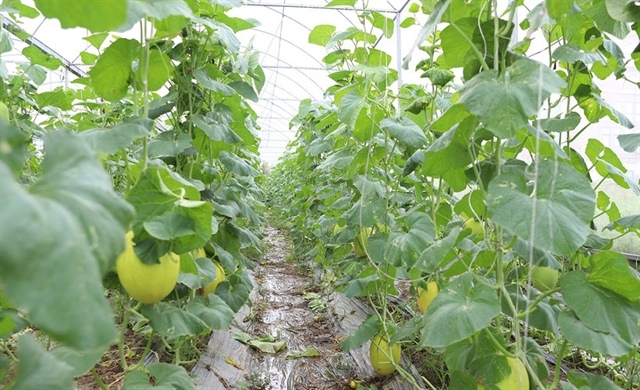Automobile industry ramps up growth efforts
Automobile industry ramps up growth efforts
Import tax on CBU (completely built unit) cars from Southeast Asian nations will be reduced to zero by 2018, posing a challenge for Vietnamese policy-makers and car producers, who now need to find ways to boost the domestic automobile industry further.

According to the Ministry of Industry and Trade, Vietnam’s automobile industry currently almost meets domestic demand; 80 percent of the demand for passenger cars and 60 percent of the demand for trucks are met domestically.
Meanwhile, a domestic component manufacturing sector has been established, supplying numerous types of spare parts for domestic automobile production and assembly.
Additionally, the broad participation of businesses, including world-famous manufacturers like Toyota, Honda, Nissan, Mercedes-Benz and Ford, is boosting the local car industry. There are now 18 foreign-invested businesses and 38 domestic businesses involved in automobile manufacturing and assembly with a capacity of around 460,000 cars per year.
According to statistics from the Vietnam Automobile Manufacturers’ Association (VAMA), its members contributed approximately 1 billion USD generated in taxes to the State budget in 2013, and created jobs for around 600,000 people, both directly and indirectly.
However, the localisation ratio for automobiles assembled in Vietnam is very low, approximately 7-10 percent for cars with less than ten seats, and 35-40 percent for light trucks. Large manufacturers such as Toyota and Ford have failed to achieve their localisation ratio targets.
Meanwhile, prices for cars in Vietnam are 20 percent higher than in other ASEAN countries.
Jesus Metelo Arias, VAMA Chairman and Ford Vietnam Managing Director, said that rapid policy changes are preventing the auto sector from growing, since automobile manufacturers usually plan their business and production activities for at least 5 years ahead.
Looking at Thailand, Vietnam’s neighbour, he said that the country now ranks amongst the world’s top 10 largest automobile exporters, producing around 2.8 million units each year with 1 million units for export. The success can be attributed to such policies as protecting import tariffs for manufacturing materials, lowering taxes from 30 percent to 20 percent for automobile manufacturers, and encouraging local enterprises to invest in manufacturing spare parts.
In an effort to boost Vietnam’s automobile industry, Prime Minister Nguyen Tan Dung recently approved a master plan on the development of the industry by 2020, with a vision for 2030. The automobile industry is to become an important domestic sector, capable of meeting domestic demand for trucks, passenger cars and some types of special-purpose vehicles.
Priority will be given to vehicles with less than nine seats, in line with rising demand for this type of car. Estimates reckon that Vietnam’s population will exceed 100 million by 2020, and per capita income will reach 2,000 USD per year.
The State will also offer incentives to people purchasing both cars which suit the country’s infrastructure and trucks intended for use in manufacturing and production.
Tran Ba Duong, Truong Hai Auto Chairman, said that Vietnam’s automobile industry requires the use of appropriate technologies that satisfy price requirements, rather than high tech solutions.
He also stressed the need for the country to integrate itself more deeply into global supply chains and produce component parts in line with international standards.
To develop industries supporting the automobile industry, experts suggested Vietnam put forward more preferential policies, such as reducing taxes, attracting more investments in the industry, and providing loans for businesses.
vietnamnet























